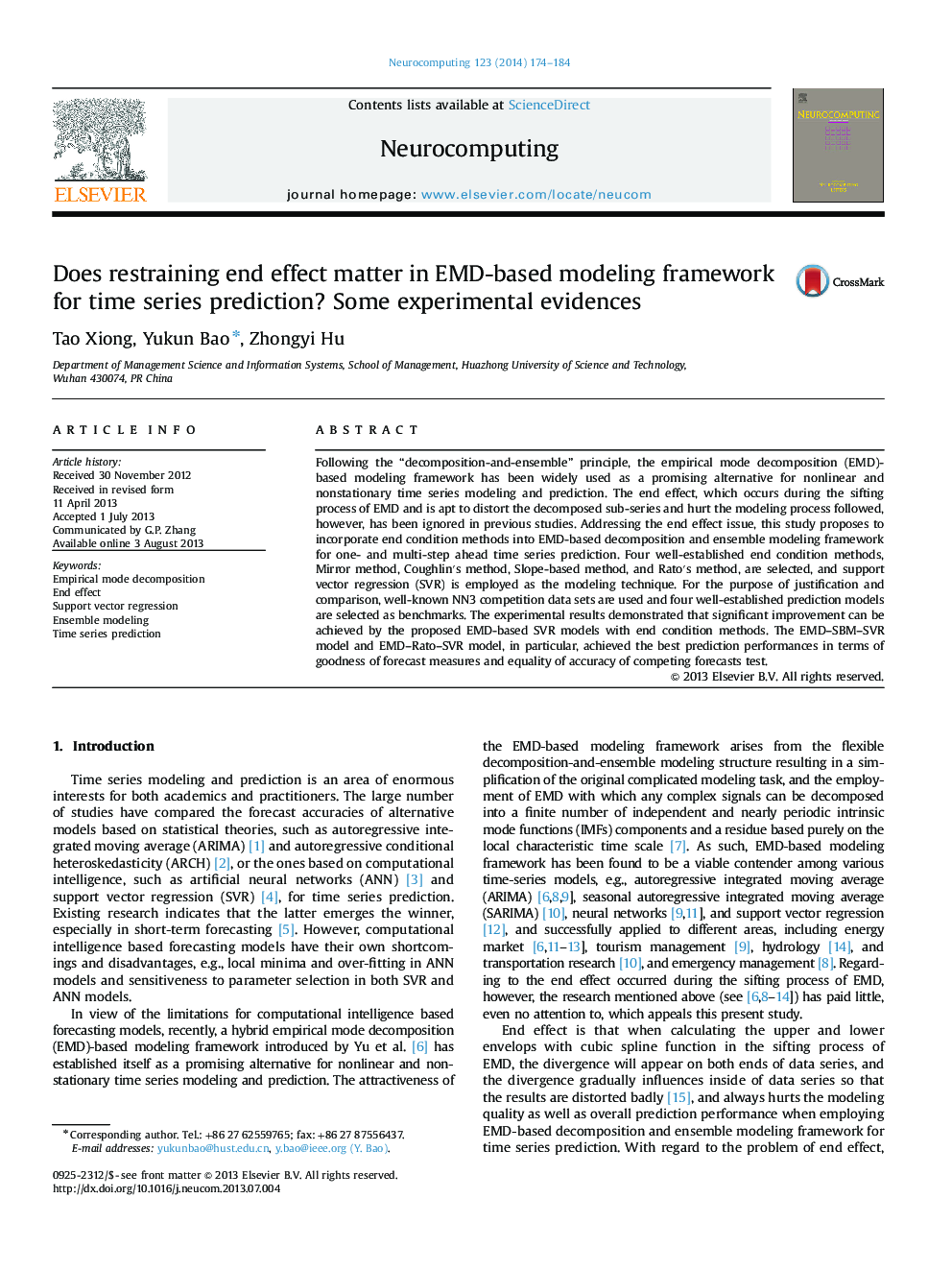| Article ID | Journal | Published Year | Pages | File Type |
|---|---|---|---|---|
| 407021 | Neurocomputing | 2014 | 11 Pages |
•Propose EMD-based modeling framework with end condition methods.•Slope-based and Rato′s method are recommended when selecting end condition methods.•Restraining the end effect improves the performance of EMD-based modeling framework.
Following the “decomposition-and-ensemble” principle, the empirical mode decomposition (EMD)-based modeling framework has been widely used as a promising alternative for nonlinear and nonstationary time series modeling and prediction. The end effect, which occurs during the sifting process of EMD and is apt to distort the decomposed sub-series and hurt the modeling process followed, however, has been ignored in previous studies. Addressing the end effect issue, this study proposes to incorporate end condition methods into EMD-based decomposition and ensemble modeling framework for one- and multi-step ahead time series prediction. Four well-established end condition methods, Mirror method, Coughlin′s method, Slope-based method, and Rato′s method, are selected, and support vector regression (SVR) is employed as the modeling technique. For the purpose of justification and comparison, well-known NN3 competition data sets are used and four well-established prediction models are selected as benchmarks. The experimental results demonstrated that significant improvement can be achieved by the proposed EMD-based SVR models with end condition methods. The EMD–SBM–SVR model and EMD–Rato–SVR model, in particular, achieved the best prediction performances in terms of goodness of forecast measures and equality of accuracy of competing forecasts test.
